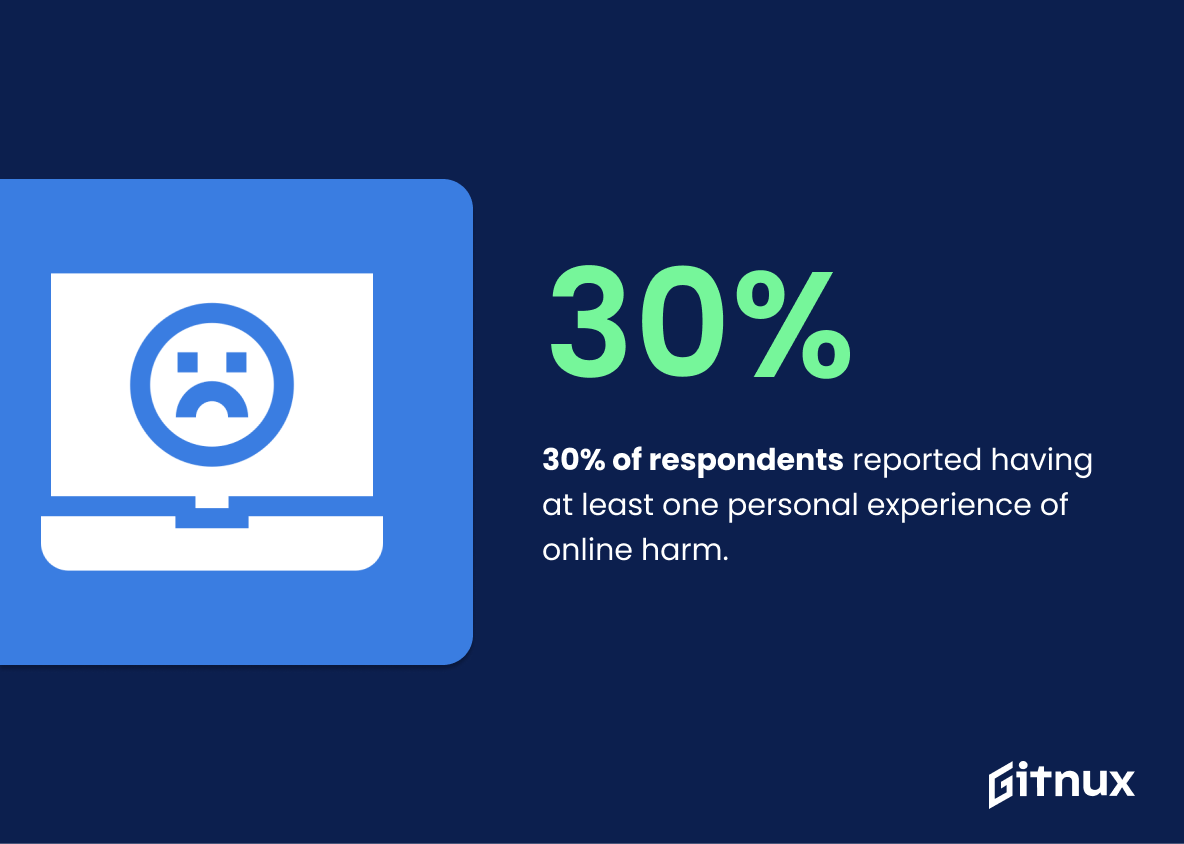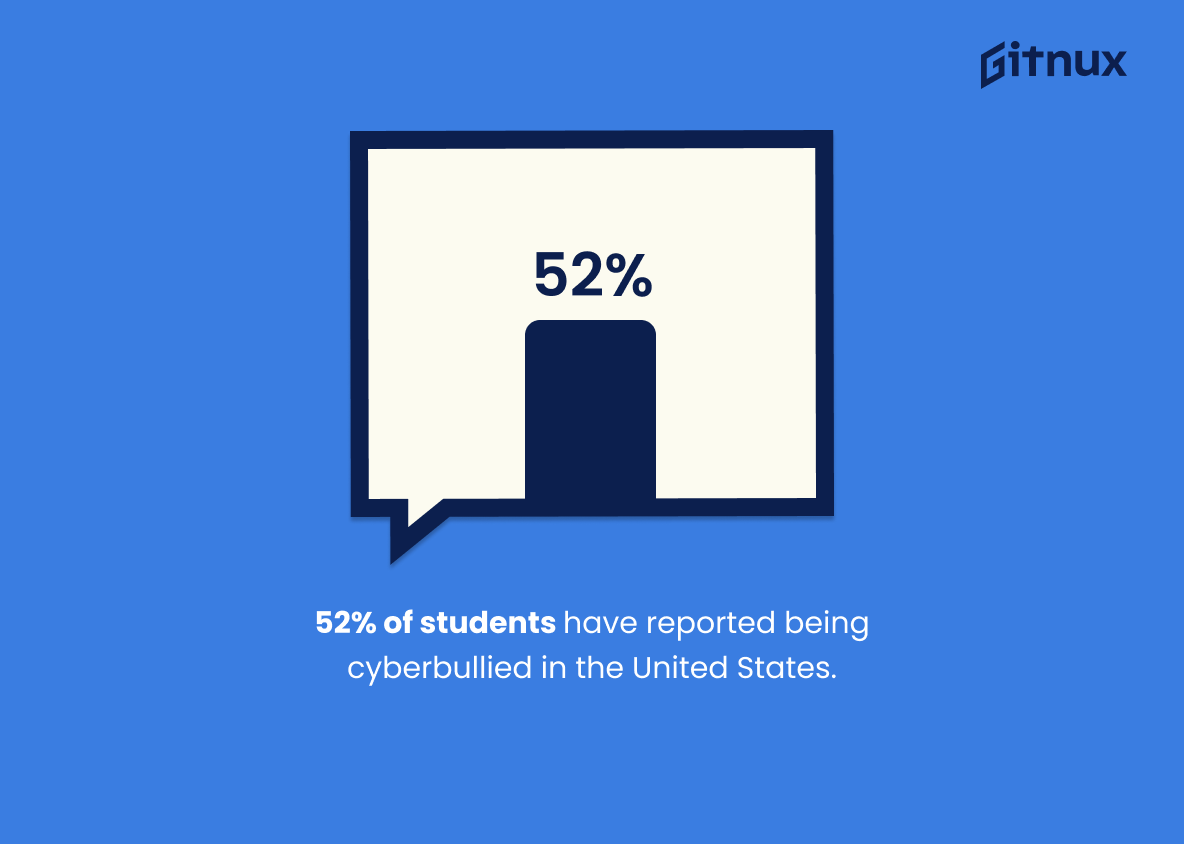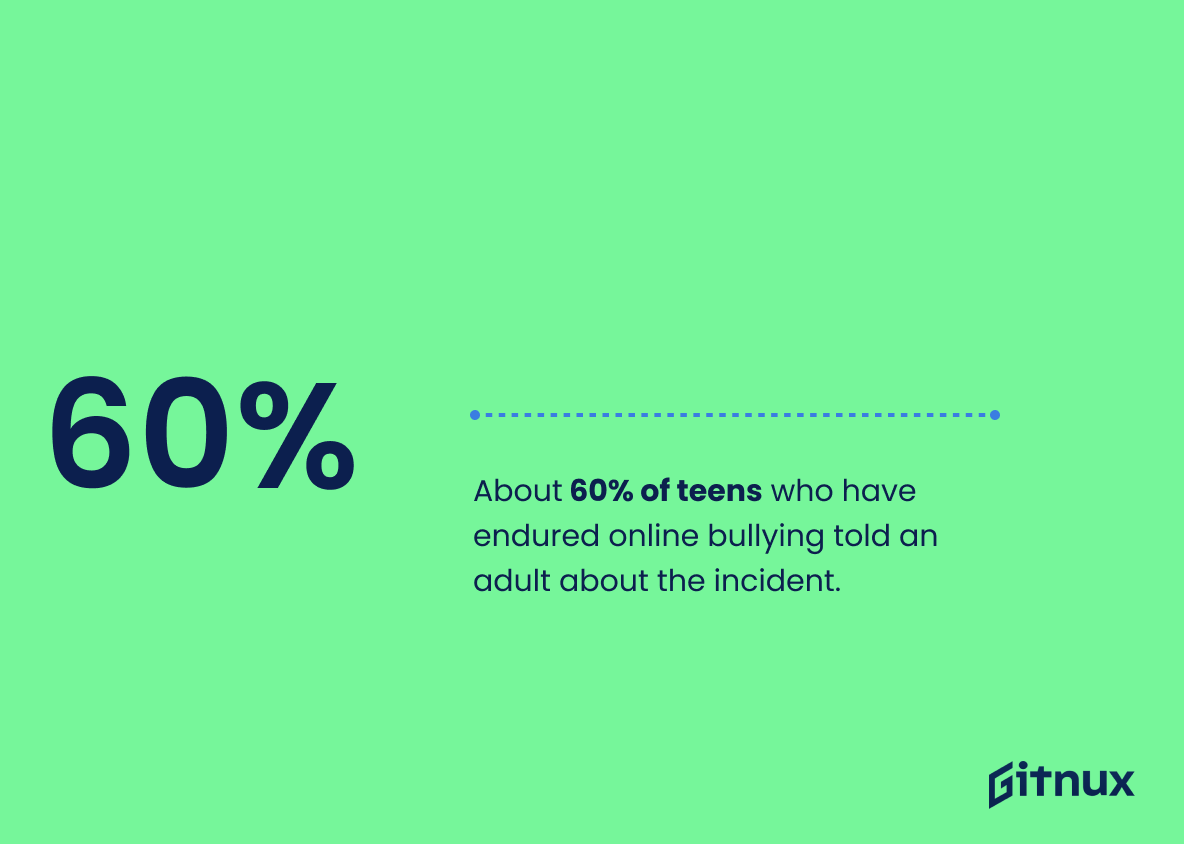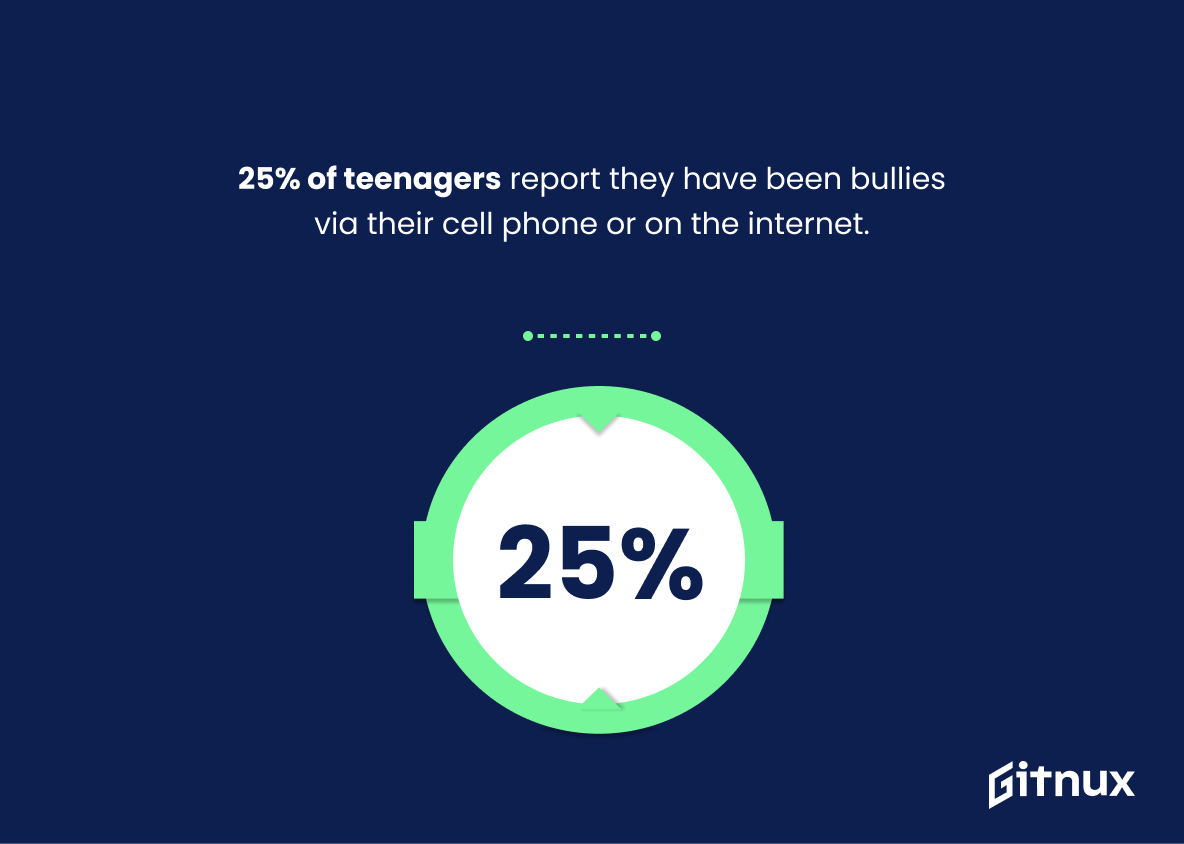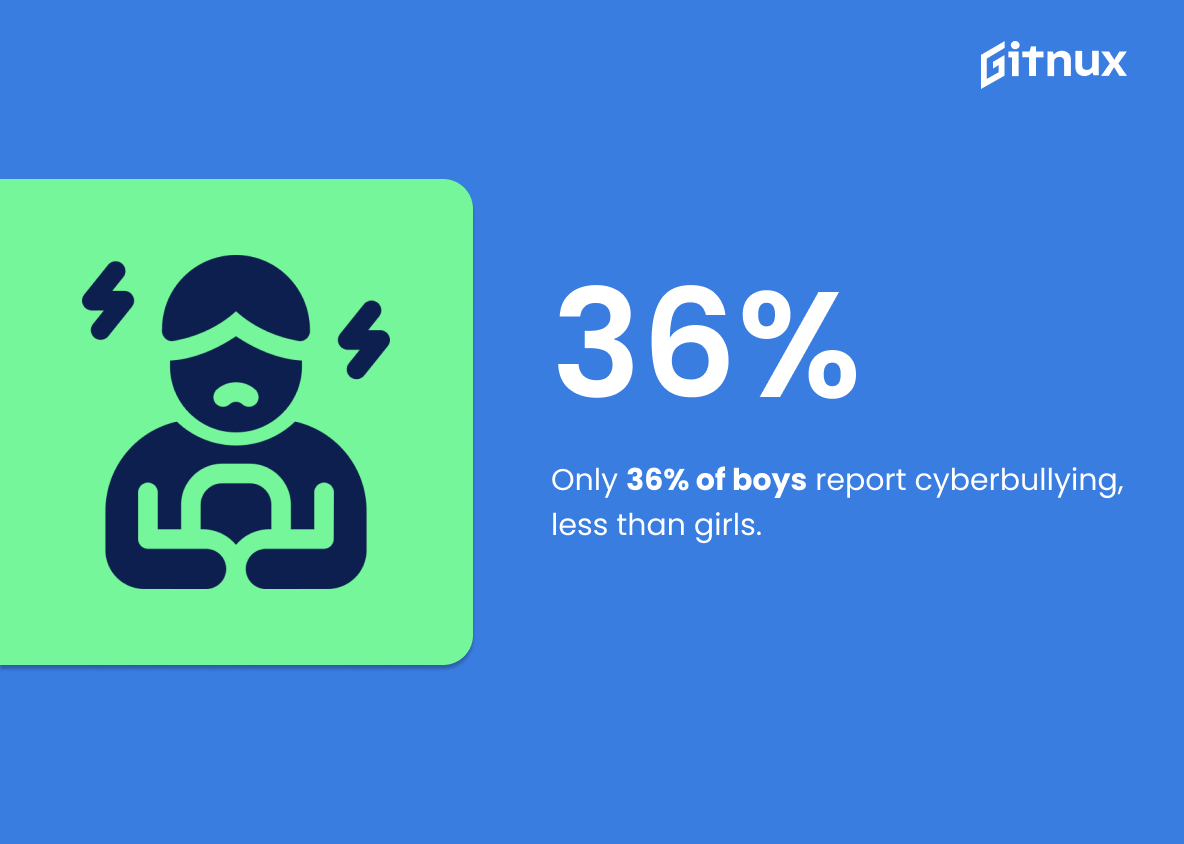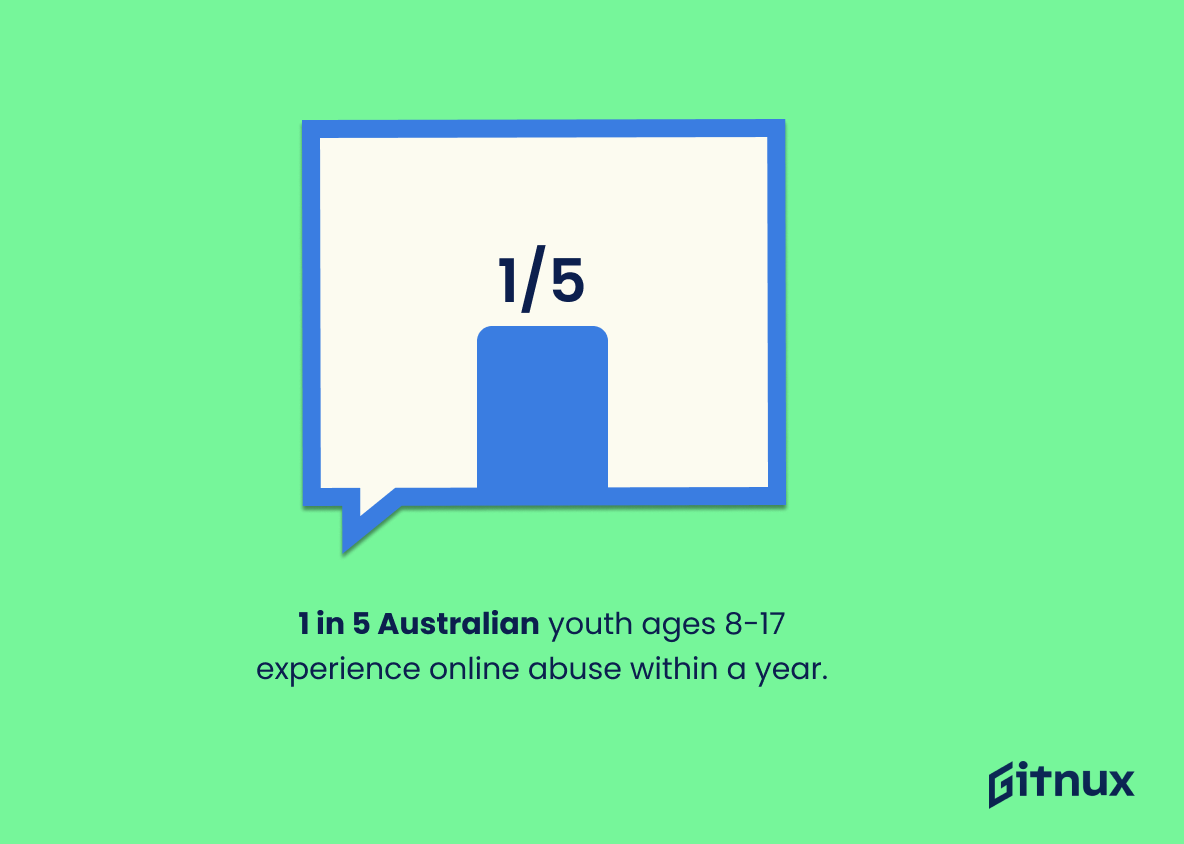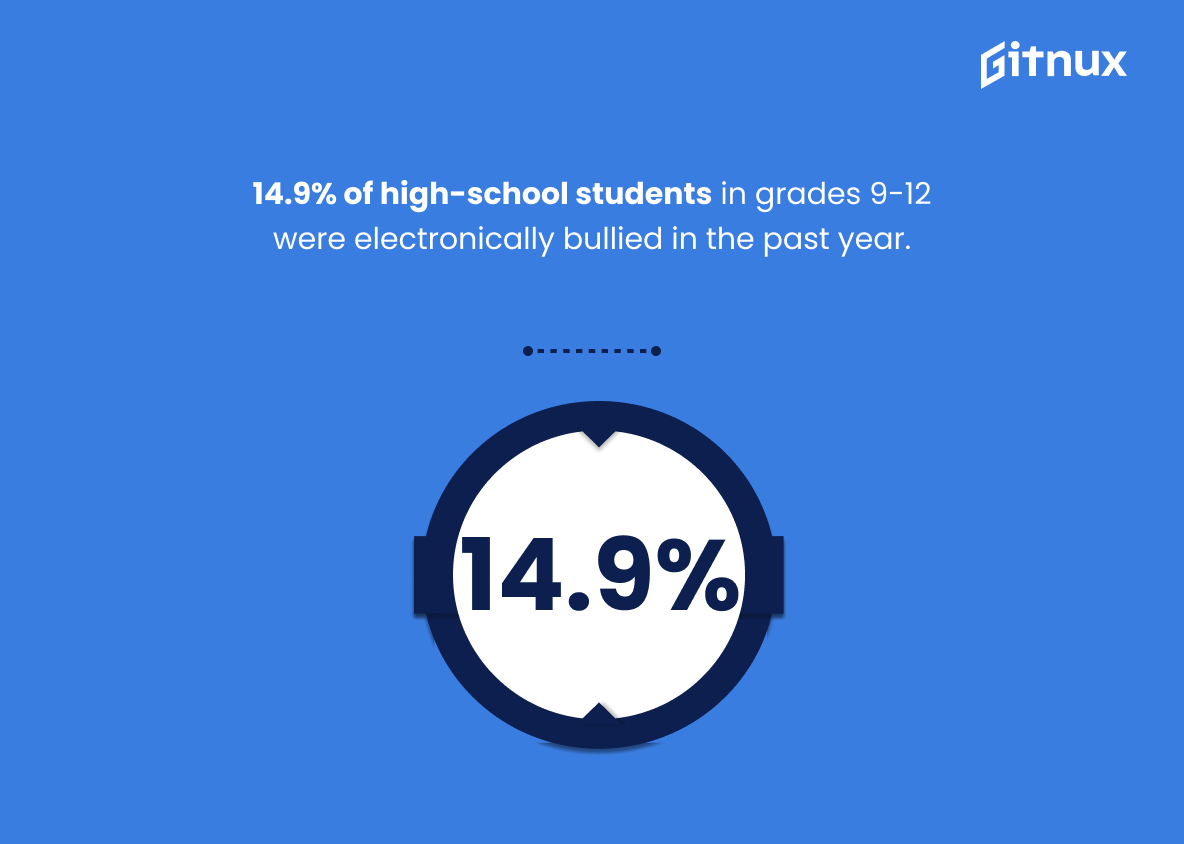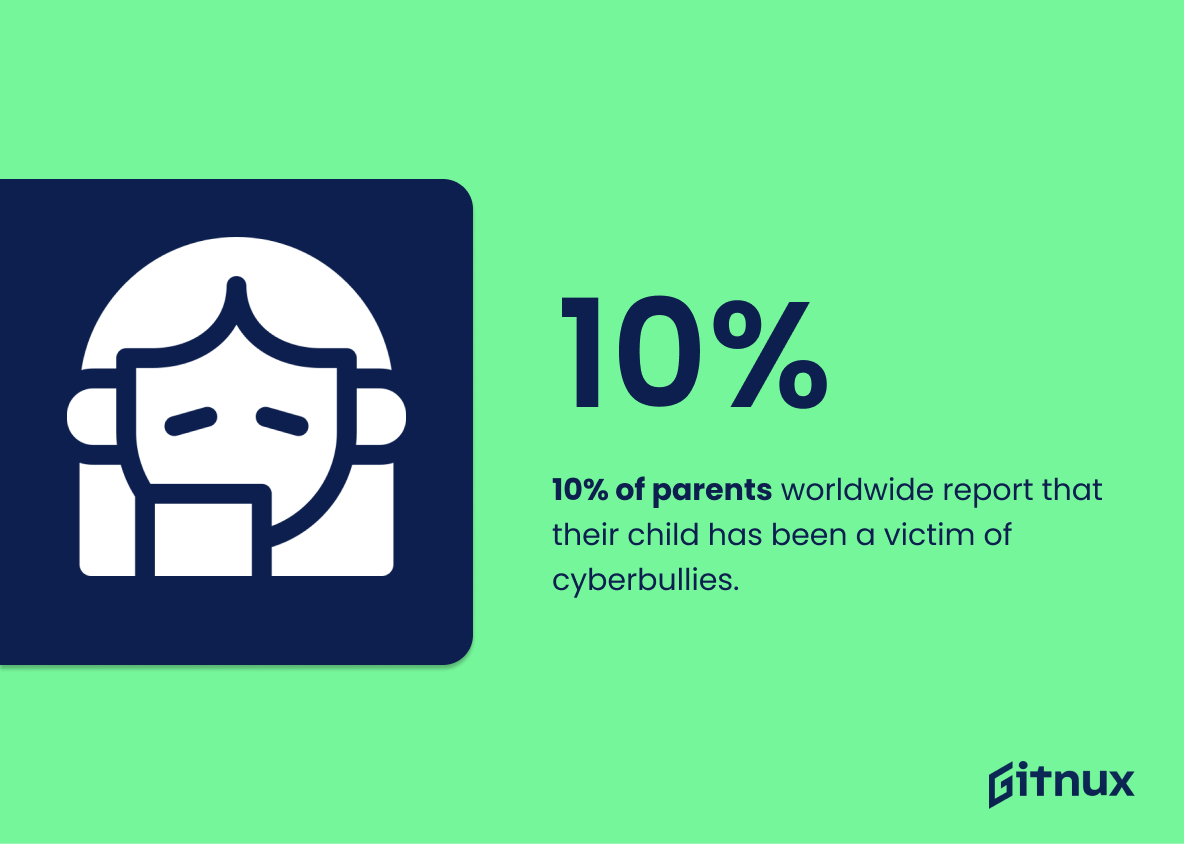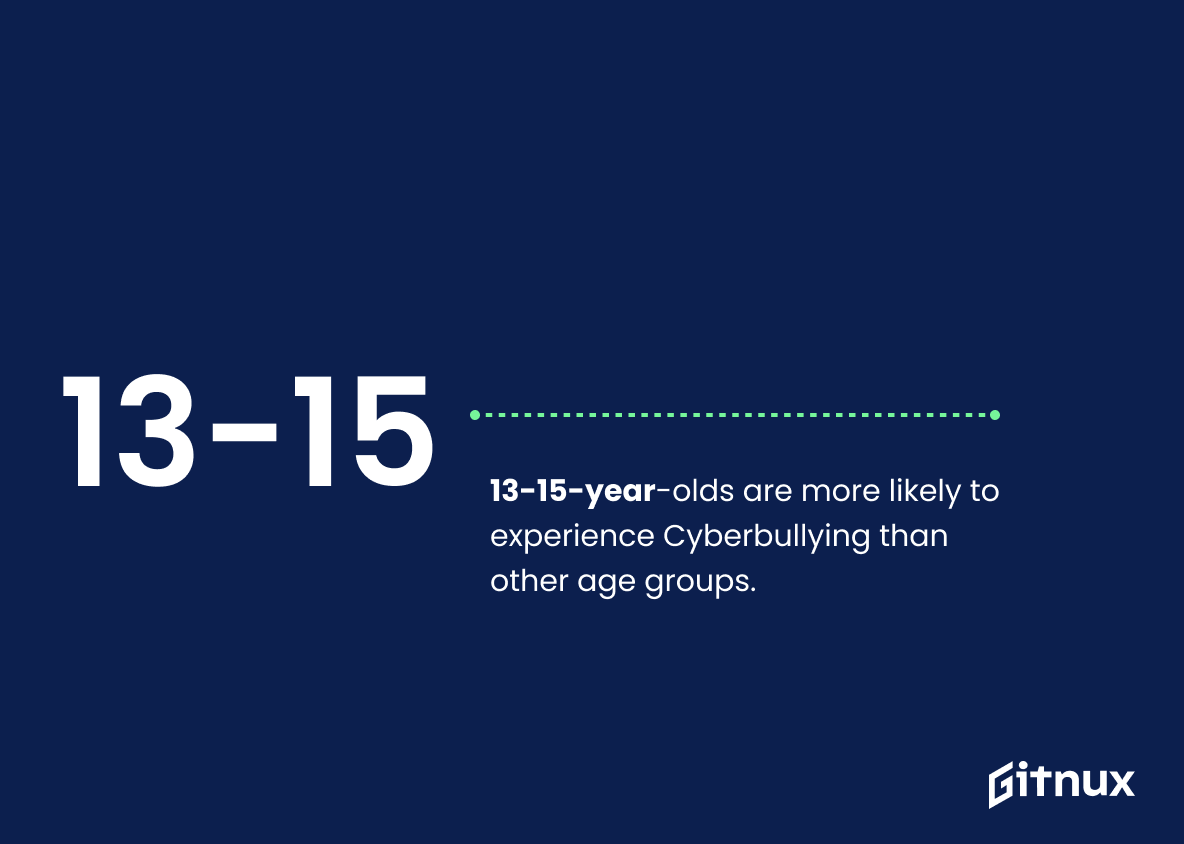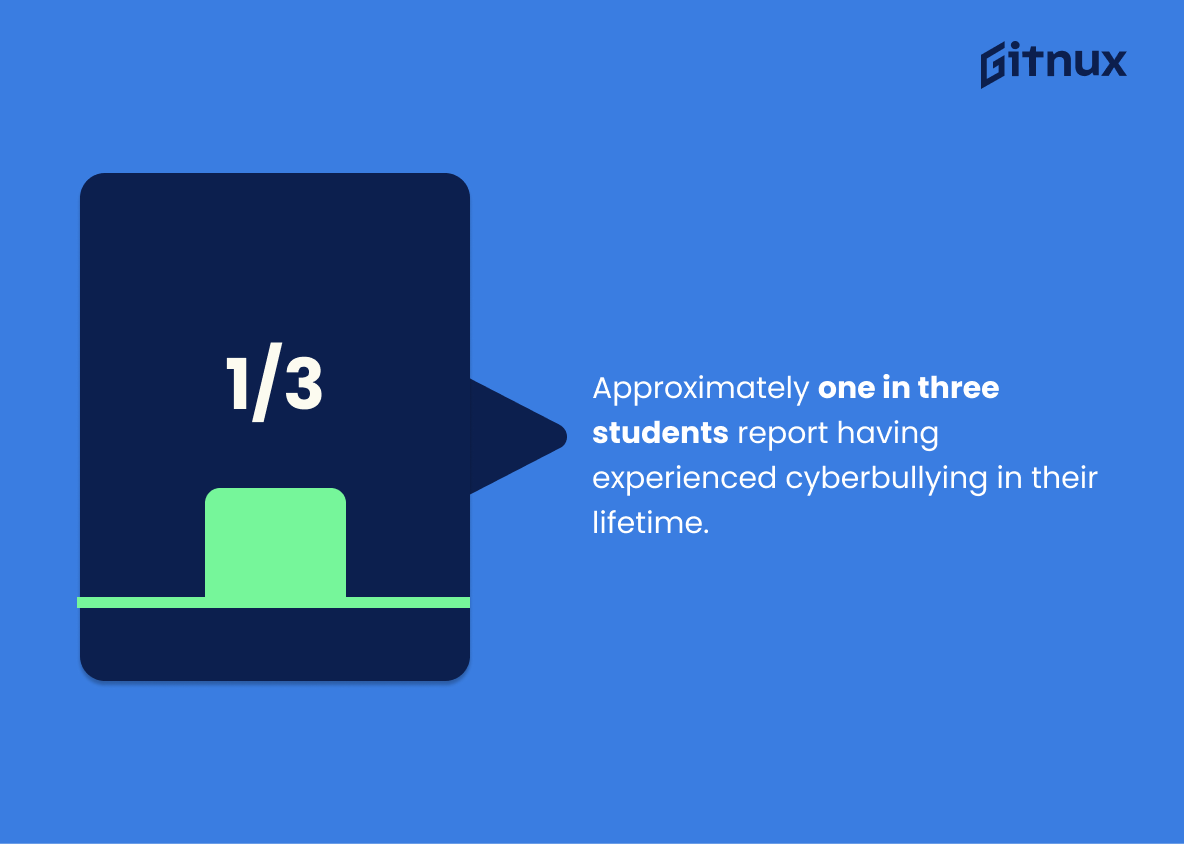In the digital age, online platforms have become a significant component of our daily lives. They’ve provided a platform for communication, education, and social interaction, but they’ve also opened new avenues for a less than desirable phenomenon: online bullying. As we venture deeper into the realm of social media and virtual interactions, the prevalence and impact of online bullying has grown. Delving into online bullying statistics is essential to comprehend the magnitude of this issue. This blog post unravels sobering data, examining the depths and expanses of this digital minefield, and highlighting the urgent need for effective measures, strategies, and solutions. This information is paramount not only for parents and educators, but for anyone who participates in the online world.
The Latest Online Bullying Statistics Unveiled
30% of respondents reported having at least one personal experience of online harm.
Highlighting that nearly one in three people in the survey have personally experienced online harm underscores the pervasive nature of this issue. It paints an alarming image of the digital landscape, one where virtual threats are not unusual occurrences but rather, a probable reality for a considerable amount of internet users. In the context of a blog post about Online Bullying Statistics, this statistic further drives home the point that online bullying is not merely a headline-grabbing phenomenon but an issue of significant concern. In all likelihood, a number of readers or people they know fall within this 30%, making the information provided in the post incredibly relevant and meaningful to the audience. More than just numbers on a page, these statistics represent real people and real experiences, effectively humanizing the issue and fostering a more thoughtful and urgent conversation about online bullying.
52% of students have reported being cyberbullied in the United States.
In the landscape of the digital world, the statistic that 52% of U.S students have experienced cyberbullying serves as a stark reminder highlighting the magnitude of this virtual danger lurking behind the screens. As a guiding light, it amplifies our understanding of online bullying, giving us real insight into an issue that’s more prevalent than many realize. When we immerse ourselves in the explorative journey of online bullying statistics, this figure illustrates not only the heightened risk that the digital generation faces but also the imperative for preventative measures. It underscores the urgency of the situation, highlighting the concrete reality of half the student population being subjected to this vicious form of bullying. This data point, therefore, becomes paramount in framing discussions, shaping policies, and guiding initiatives aimed at making the online world safe for students nationwide.
About 60% of teens who have endured online bullying told an adult about the incident.
Highlighting the statistic that approximately 60% of teens reporting online bullying incidents to adults provides crucial insight into the willingness and comfort of victims to share their distressing experiences. It uncovers the need for encouragement and education, allowing more teens to come forward. In the grand canvass of our online bullying discourse, this statistic serves as a significant brushstroke, suggesting that the dark specter of cyberbullying is starting to be illuminated by the voices brave enough to bring it to light.
Among those who’ve experienced online bullying, 35% were threatened online.
Exposing the stark reality of digital threats, the statistic that speaks of a significant 35% of online bullying victims who faced online threats paints a grave picture. This nugget of information provides a keen insight into the severity and potential danger of online bullying, making it a pivotal point within the context of a blog post on Online Bullying Statistics. Moreover, it effectively underscores the urgency for strategies and measures to curb these vicious online threats, stimulating a call to action for its readers while challenging policymakers and educational institutions to tackle this digital menace.
25% of teenagers report they have been bullies via their cell phone or on the internet.
In the interconnected realm of the digital age, awareness surrounding cyberspace hostility is crucial. The figure indicating that a quarter of teenagers confess to being the perpetrators of online or cell phone bullying imparts a stark reality. Within the broader spectrum of online bullying statistics, this revelation serves as a pivotal insight.
It paints a detailed report, highlighting not just victims but transgressors as well, giving us a profound understanding of the extent of the problem. This striking number assists in delineating the magnitude of the issue at hand among the tech-savvy youth, prompting us to contemplate on the sheer volume of bullying instances that take place behind screens. Thus, becoming a cornerstone for discussions around online bullying prevention tactics as well as the need for a comprehensive digital etiquette education.
Boys are less likely than girls to report cyberbullying instances, with only 36% of boys reporting.
Highlighting the statistic that only 36% of boys report cyberbullying instances underscores a hidden crisis in the online realm, particularly capturing the vulnerability of young males in cyberspace. It sheds light on the silent struggle some boys might be facing against online bullying, possibly culminating in emotional or psychological scars due to unreported and consequently, unresolved issues. Crafting a path towards breaking this silence, this figure serves as a crucial wake up call, urging the amplification of male voices in the fight against cyberbullying. Concurrently, it also stimulates discussions about redefining the measures of preventing and addressing this critical issue from a gender-sensitive perspective.
Among Australians aged 8 to 17, one in five has been socially excluded, threatened, or abused online in a 12-month period.
Interpreting this disturbing statistical nugget, we find a deeply unsettling reality simmering beneath the digitized facade of our society: that a whopping 20% of Australian youth, within the tender ages of 8 to 17, have been subjected to the searing heat of social exclusion, threats, or abuse online within a single year.
In the grand canvas of online bullying, this factoid serves as a somber brushstroke, painting a stark picture of the electrifying yet pernicious realm that the internet can morph into. It echoes the urgency of our collective call to action, earning its right as one of the heavyweights in a blog post dedicated to Online Bullying Statistics.
The gravity of this statistic lies not merely in its raw numerical data, but rather in its painful illustration of the lives it represents. It is a chilling reminder for policy-makers, educators, parents, and youth themselves to fortify their cyber safety measures, implement more effective curative and preventive strategies, and foster resilience amongst the digital denizens traversing the complex landscape of our cyber world.
In Italy, online bullying has increased by 73% between 2016 and 2021.
Undoubtedly, the alarming 73% rise in online bullying in Italy between 2016 and 2021 paints a grim landscape of digital interactions, necessitating immediate intervention. These figures serve as a stark reminder of the intensifying menace that is jeopardizing the hitherto unchartered waters of online safety. They underscore the urgency of advocating robust countermeasures, spearheading educational awareness campaigns, as well as curating ethical and secure online environments. Furthermore, this finding, crucially positioned at the epicenter of the discourse, renders a compelling, unquestionable case for the global commitment to mitigating online harassment, cyberbullying, and digital abuse.
A 2018 study found that girls are more often victims of cyberbullying than boys, a total of 36% versus 26%.
In the ever-evolving digital landscape of our modern world, the quantifiable data from the 2018 study provides a pivotal and stark insight into the gendered dynamics of cyberbullying. As we delve deep into the blog post about Online Bullying Statistics, it’s impossible to overlook the heightened vulnerability of girls, who emerge as victims of cyber-bullying a significant 36% of the time, compared to their male counterparts at 26%. This discrepancy underscores potential gender biases in cyberbullying, thereby driving home the indispensability of personalized, gender-inclusive online safety measures.
14.9% of high-school students in grades 9-12 were electronically bullied in the past year.
Translating this stark data into a tangible narrative, we are confronted with a sobering reality. Nearly one in seven high-school students, navigating grades 9-12, have fallen prey to electronic bullying within the last year alone. This percentage threads a critical narrative in our discourse on online bullying, serving not only as a measure of the issue’s prevalence but also as an impetus for urgent intervention. It underscores the pervasive, often unrefuted, existence of digital cruelty within the student community, underlining the need for proactive strategies and preventive measures. As we endeavour to depict the scale and impact of online harassment, these figures occupy an essential place, laying bare the undeniable urgency and gravity of the problem.
10% of parents worldwide report that their child has been a victim of cyberbullies.
In the vast expanse of online communities, the implications of this statistic are troublingly clear and underscore an urgent global concern. The figure reveals that one in every ten parents globally is sounding the alarm about their child falling prey to cyberbullies. The repercussions of such virtual torment are far from trivial, ultimately infiltrating the everyday life of a child, potentially leading to psychological harm, low self-esteem, or even worse consequences.
Translating this figure to real-world terms, imagine a classroom of 30 students. This number implies that, statistically, three children in that room may have experienced cyberbullying. For a global society delving deeper into the digital age, it’s a wake-up call to the lurking dangers in the online spaces our children inhabit daily. It fuels a call to action for tighter online security measures, parental monitoring of online activities, legislation and digital etiquette education, with the end goal of mending the online landscape into a safer place for our younger generation. This knowledge can play a formidable role in understanding, preventing, and battling online bullying.
36.5% of US teens have been bullied over the internet.
Highlighting the significant figure of 36.5% of U.S. teens enduring online bullying underscores the alarming scale of the problem within this demography. Integrating this statistic into a blog post about Online Bullying Statistics sends a stark message. It sheds light on the harsh cyber reality many teenagers in America are confronting daily, emphasizing the urgency to address and tackle this silent pandemic. This data point doesn’t just represent a percentage; it represents millions of young lives impacted by the shadowy side of the digital world, hence underlining the necessity of our continuous struggle to create safer online spaces.
13-15-year-olds are more likely to experience Cyberbullying than other age groups.
Uncovering the striking truth about 13-15-year-olds being the most vulnerable to cyberbullying throws a spotlight on a critical age group that’s under severe digital distress. This fact resonates with urgency and adds weight to the discussion on online bullying statistics, underlining the need for proactive protective measures. It nudges parents, educators, and policymakers to see this age bracket as a high-risk category – perhaps even the ‘eye’ of the cyberbullying storm. Thus, it warrants the pressing need for both preventative actions and robust responses. By highlighting this statistic, the blog post turns our attention towards a digital battleground where our unified efforts are urgently needed.
Approximately one in three students report having experienced cyberbullying in their lifetime.
Diving deep into the world of online bullying statistics, our attention is ensnared by a staggering figure: Nearly one-third of students proclaim they’ve been victims of cyberbullying. This stark figure serves as an uncomfortable reminder of the prevalence of cyberbullying in the digital realm, emphasizing its widespread reach. It shines a harsh light on the silent epidemic that’s sweeping across our educational institutions, a wake-up call that reverberates the urgency of addressing this issue. This statistic not only quantifies the gravity of the problem at hand, but also underlines the need for increased digital safety measures, comprehensive anti-bullying policies, and focused educational efforts designed to combat this growing menace.
Seven out of ten young people victims of cyberbullying state it has significantly lowered their self-esteem.
The statistic ‘Seven out of ten young people victims of cyberbullying state it has significantly lowered their self-esteem’ acts as a spotlight, illuminating the gravity of online bullying. It’s a stark reminder of the emotional and psychological impact this equivalent of playground bullying has in the digital world. It underlines the urgency of concerted efforts to curb cyberbullying, as it decisively echoes that ruinous detriment to the self-worth of our youth is not an abstract concept, but a harsh reality for a sizeable majority. It’s not merely numbers on a page – it’s a call to arms. An implication that waiting for tomorrow may be too late for some, thus highlighting the imperative need to focus on educating, preventing, and tackling the issue today. This statistic serves as a harrowing link between the nebulous concept of cyberbullying and the concrete deterioration of a young person’s sense of self-worth.
Conclusion
In conclusion, the statistics on online bullying are indeed alarming, illustrating a significant issue in our digital world today. It is evident that anyone, regardless of age or background, can potentially fall victim to this menace. In addition to contributing to distress and mental health issues, online bullying disrupts everyday life and creates an unfriendly environment on otherwise beneficial platforms. Hence, it is imperative to pay diligent attention to these statistics and actively engage in discussions aimed at rectifying this problem. As we continue to lean on technology and the internet for numerous aspects of our lives, we must also work towards creating a safer digital space, free from bullying or any form of intimidation.
References
0. – https://www.www.statista.com
1. – https://www.www.esafety.gov.au
2. – https://www.www.stopbullying.gov
3. – https://www.www.childtrends.org
4. – https://www.www.fosi.org
5. – https://www.www.internetsafety101.org
6. – https://www.guardchild.com
7. – https://www.www.cdc.gov
8. – https://www.www.ncab.org.au
9. – https://www.cyberbullying.org
10. – https://www.www.verywellfamily.com
11. – https://www.www.bullying.co.uk
12. – https://www.theconversation.com
13. – https://www.www.puresight.com
